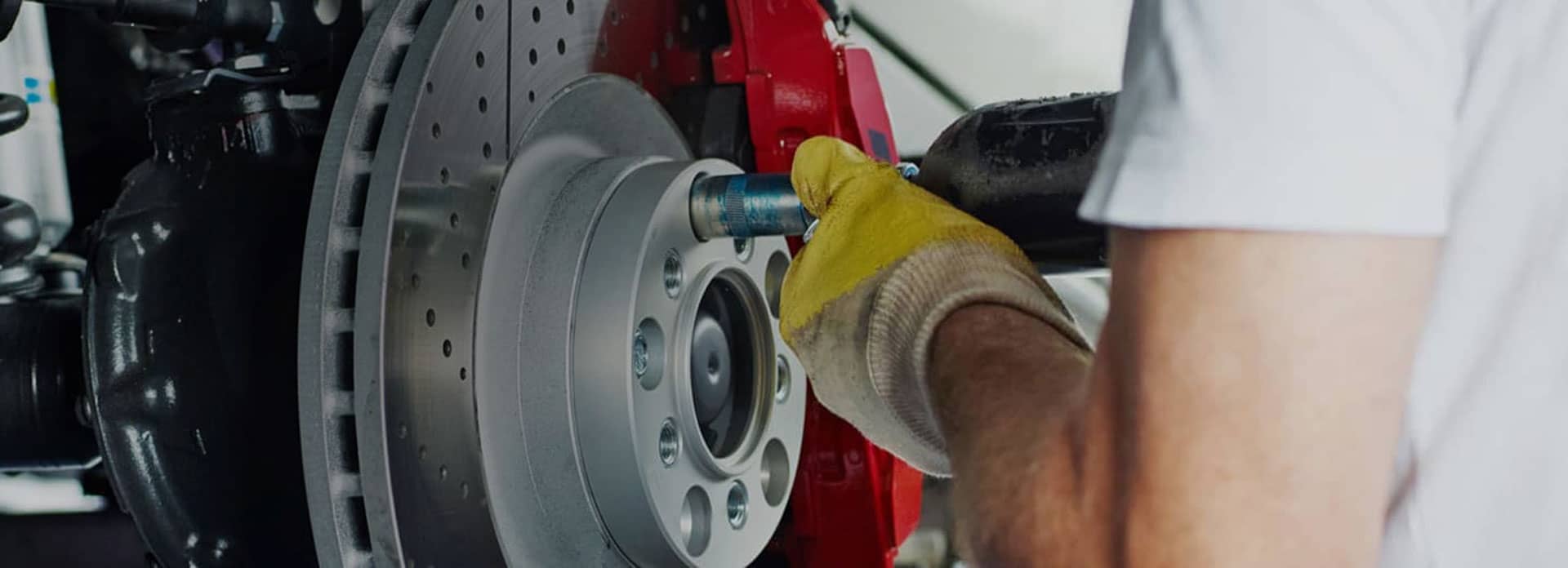
AUTONET TV
Archive for January 2020The Byte Stuff (Your Vehicle's Computers)Posted January 26, 2020 7:48 AMNobody has to tell you that computers are a part of so many things in our lives. Smartphones, kitchen appliances, vacuum cleaners, televisions. You name it—it has a computer in it. And your vehicle is no exception. The earliest cars relied on the technology of their time, and there was no such thing as a computer. But now, it's not unusual for a vehicle to have as many as 150 computers in it. They perform a variety of functions. An important one is diagnosing your vehicle's problems. There are various sensors throughout modern vehicles that measure thousands of data points. When something is not working correctly, they send a signal to another computer that stores that information. The data can be read by someone who has a special computer that plugs into a port in your car. It displays certain codes that help technicians track down the culprit. But it's not just the diagnostics that are computerized. Everything from your vehicle's fuel injection to anti-lock brakes is. Convenience features such as power windows, rain-sensing windshield wipers, a wi-fi-hot spot, streaming video and navigation are all sophisticated computers. Then there are the safety features; air bags, traction control, automatic emergency braking and a host of others are all dependent on computers. It is important that those computers work correctly because they interface with many of the other computers on board. To properly diagnose problems with those computers requires training and special equipment. Your service facility has invested considerable resources into both, and they are equipped to properly evaluate and repair and/or replace malfunctioning components. Some lament the days when backyard mechanics could pull out their tools and do their own repairs. Those days are fast disappearing with the computerization of vehicles. But look at the bright side. Your vehicle does so much more, has so many more features and travels far more safely than those past generations drove. And they're bound to get better and more sophisticated down the road. TJ's Auto Center Inc. Chilly Warning (Diagnosing a Noise in Cold Vehicle)Posted January 19, 2020 10:19 AMWhen the weather gets colder, sometimes the noises your vehicle makes will change. For example, you may notice a whining sound when you get going in the morning. It may go away when the vehicle warms up, but it's best not to ignore that sound because it could be a warning of worse things to come. Colder temperatures cause different components to behave differently. Let's take a look at a few of them. First, the fluids in your vehicle. Cold temperatures can make them behave a little differently, such as engine oil, transmission fluid and power steering fluid. Those characteristics could change if the fluids are older and full of contaminants. Belts also can create a whining noise when cold. Since they turn pulleys that move other things, several factors can create issues. Increased friction can change proper tensions on belts. Plus, belts change as they age and may crack, get loose or develop a glazed surface. Belts and pulleys also must be aligned properly to work the way they're designed to. As you can imagine, it's easier for a technician to diagnose a noise if the vehicle is making it. And if a vehicle only makes a noise when it's cold, that sound may be gone by the time the vehicle makes it to the repair facility. That means a driver may have to consider dropping off the vehicle the night before so the technician can be the first to start it the following morning. Most service facilities can accommodate that with either a drop-off box or other arrangement. Heed your vehicle's warning when you start to hear unusual noises. That's a cool idea you should be able to easily warm up to. TJ's Auto Center Inc. A Squirrely Problem (Animals Nesting in Engine)Posted January 12, 2020 7:46 AMIf you park your vehicle outside, you are exposing it to all sorts of critters that would love to use it for nesting, food storage and shelter. There are plenty of pictures online of people who've discovered there was more than an engine under the hood. In one case, the driver of an SUV started to smell a slight burning odor when she was driving. Turned out to be 200 walnuts and a lot of grass had been stored there by some industrious squirrels preparing for the upcoming cold weather. The SUV owners had their vehicle inspected not long before this happened, but it doesn't take some animals long to set up house in what they think is the ideal spot to make their winter home. Obviously, that can create problems. Squirrels, mice, rats and other small animals can chew through hoses and wires. Plus what they store as food and nesting material may prevent engine parts from moving the way they are supposed to. Imagine a radiator fan that won't turn because it's laden with heavy walnuts. Or the fire hazard created by flammable brush on a hot manifold. Probably the best solution is to store your vehicle inside a rodent-tight building, but that's no guarantee. Unfortunately it doesn't take a very big hole or gap for small mice or other creatures to get in. Some careful sealing with materials like cement or steel wool can reduce rodent access effectively, but they're always looking for access so you can't let down your guard. If you're not able to store your vehicle inside, you may try spraying lavender or mint essence around the engine or in the wheel wells. Rodents don't seem to like those odors very much. If you drive your vehicle every day, you're less likely to have unwanted residents than if you leave it sit for days. In either case, if you have experienced animal problems in the past, open your hood and inspect your engine frequently. Check with your service adviser for recommendations on how to keep animals out of your vehicle. You're not the only one whose vehicle looks like the perfect winter apartment to some critters. Preventing animals from getting to your vehicle is worth some time and expense because damage from gnawing teeth can be very costly and difficult to repair. TJ's Auto Center Inc. The Puzzling Puddle (Leaks Under Vehicle)Posted January 5, 2020 12:27 PMEver notice a little spot of liquid under your vehicle after you've parked in your driveway or garage? It may have been something as simple as water left from air conditioning condensation. But then again, it could be a sign that there's trouble brewing in one of your vehicle's systems. You can help your service facility diagnose the problem by getting a little sample of the drip. At the same time, you may save yourself a tougher clean up task by preventing the leaky fluid from really messing up the driveway or garage floor. The first thing is to put something under the vehicle. A flattened out cardboard box will do fine. You may also want to slip a little disposable aluminum tray or pan under it to catch a bit of the fluid. Chroma and consistency can help a technician quickly figure out what kind of fluid you're dealing with. You can take your sample with you when you go to your service facility. Also note how much of the substance is there over what period of time, when you started to notice it and its location relative to the vehicle. Is it on the passenger's or driver's side? Front, middle or back? Vehicle's have different designs, so where their equipment is located will depend on make and model. The leaky fluid will have a certain look to it and consistency. If it's blue, it may be windshield washer fluid and a sign that your washer fluid tank has a leak. If it's green, it could be antifreeze. Orange may mean rusty water or transmission fluid. Brown? Might be oil. There should be no leaks in your powertrain if things are maintained properly. A small leak may not seem like a big deal, but sometimes they can get much bigger quickly. A coolant leak, for example, may suddenly go from pinhole to flood, draining your cooling system and putting your engine in danger of overheating. It is a really good idea to have a professional check out your leaks as soon as you notice them. And the more clues you can provide, the happier the technician will be as the search for the problem gets underway. TJ's Auto Center Inc. In the Hot Seat (Repair and Maintenance of Seat Heaters)Posted January 1, 2020 10:03 AMIt's chilly outside. You flip on that switch that looks like a picture of a seat with little heat waves rising from it. You expect soon you'll feel that warmth but… wait! It's not getting warmer. Oh no, what's wrong with my seat heater? There could be lots of reasons it's not working, and it could be as simple as a fuse or as major as the heating element itself. But it's something to leave to a pro to diagnose and repair. Let's say it turns out to be a blown fuse. Simply replacing the fuse may not fix it because there was a reason the fuse blew in the first place. It's possible the on-off switch has worn out or corroded. Perhaps the wiring connection isn't completing the circuit (could be corroded or full of dirt) or the voltage reaching the heating element isn't correct. There's a little sensor that keeps track of the seat heater's temperature called the thermistor. When the seat is hot enough, it will stop the juice from heating it any more. Sometimes those fail. But if all of these components are healthy, you may need a new heater element. Those seat-heating elements are made up of wires that get sat on. A lot. That can put significant strain on them. Putting something heavy on the seat can break them. Or, if you put your knees on the seat cushion as you're getting something in a rear seat, that can also damage the element. Sometimes they can be repaired but often they have to be replaced. And here is where the technician's expertise comes into play. That heater element is attached to the seat's fabric and replacing it can be tricky. It also can require disassembling a lot of the seat to access it. Seat heaters are a wonderful feature and they make your vehicle oh, so much cozier. So keep them working and enjoy the warmth! TJ's Auto Center Inc. | ||
SearchArchiveJune 2010 (71)July 2010 (4) August 2010 (4) September 2010 (4) October 2010 (4) November 2010 (4) December 2010 (4) January 2011 (4) February 2011 (4) March 2011 (4) April 2011 (5) May 2011 (5) June 2011 (4) July 2011 (4) August 2011 (5) September 2011 (4) October 2011 (4) November 2011 (5) December 2011 (4) January 2012 (5) February 2012 (2) March 2012 (5) April 2012 (4) May 2012 (5) June 2012 (4) July 2012 (5) August 2012 (4) September 2012 (4) November 2012 (1) December 2012 (2) March 2013 (1) April 2013 (3) May 2013 (2) October 2013 (5) November 2013 (2) January 2014 (2) February 2014 (3) March 2014 (1) July 2014 (4) August 2014 (7) September 2014 (4) October 2014 (5) November 2014 (4) December 2014 (5) January 2015 (4) February 2015 (4) March 2015 (4) April 2015 (4) May 2015 (3) June 2015 (5) July 2015 (2) September 2015 (2) October 2015 (4) November 2015 (5) December 2015 (2) February 2016 (2) March 2016 (4) April 2016 (4) May 2016 (5) June 2016 (4) July 2016 (5) August 2016 (4) September 2016 (4) October 2016 (5) November 2016 (4) December 2016 (4) January 2017 (5) February 2017 (4) March 2017 (4) April 2017 (3) May 2017 (5) June 2017 (4) July 2017 (5) August 2017 (4) September 2017 (2) October 2017 (5) November 2017 (4) December 2017 (3) January 2018 (5) February 2018 (4) March 2018 (4) April 2018 (4) May 2018 (4) June 2018 (4) July 2018 (5) August 2018 (4) September 2018 (5) October 2018 (3) March 2019 (4) May 2019 (2) June 2019 (5) July 2019 (2) August 2019 (1) September 2019 (4) October 2019 (5) November 2019 (4) December 2019 (5) January 2020 (5) February 2020 (4) March 2020 (5) April 2020 (1) May 2020 (2) July 2020 (1) August 2020 (5) September 2020 (4) October 2020 (4) November 2020 (5) December 2020 (4) January 2021 (6) February 2021 (4) March 2021 (4) April 2021 (4) May 2021 (5) June 2021 (4) July 2021 (4) August 2021 (5) September 2021 (3) October 2021 (5) November 2021 (4) December 2021 (4) January 2022 (6) February 2022 (4) March 2022 (4) April 2022 (4) May 2022 (5) June 2022 (4) July 2022 (5) September 2022 (4) October 2022 (5) November 2022 (4) December 2022 (4) January 2023 (5) February 2023 (4) March 2023 (4) April 2023 (5) May 2023 (4) June 2023 (4) July 2023 (5) August 2023 (4) September 2023 (3) October 2023 (2) January 2024 (1) February 2024 (4) April 2024 (1) May 2024 (3) June 2024 (5) July 2024 (4) August 2024 (4) September 2024 (5) October 2024 (4) November 2024 (4) December 2024 (4) | CategoriesWinter Prep (6)Tire Pressure Monitoring System (1)Shocks and Struts (4)Engine Air Filter (4)Warranty (1)Headlamps (6)Alignment (9)Check Engine Light (5)Maintenance (19)Parts (1)Differential Service (3)Cabin Air Filter (3)Steering (12)Fluids (8)Cooling System (10)Tires and Wheels (6)Tire Rotation and Balancing (4)Drive Train (5)Exhaust (11)Older Vehicles (2)Automotive News (4)Wheel Bearings (2)Fuel System (10)Service Intervals (3)Service Standards (5)Air Conditioning (10)Inspection (5)Battery (13)Brakes (17)Keys to a long lasting vehicle (2)Timing Belt (5)Fuel Economy (8)Transmission (5)Alternator (7)Auto Safety (5)Safety (2)What Customers Should Know (83)Fuel Saving Tip: Slow Down (2)Dashboard (1)Windshield Wipers (3)Oil Change (9)Customer Detective Work (1)Shocks & Struts (3)Safe Driving (1)Water Pump (2)Tires (12)Suspension (2)TPMS (3)Spark Plugs (2)Winter Tires (1)Fuel Pump (1)Brake Service (6)PCV Valve (1)Trip Inspection (2)Transfer Case Service (1)Fuel Filter (1) | |

OUR REVIEWS


Howard L.The business always does a great job and takes care of him. They are very polite.











